What one culture thinks humorous, another may not, and cultural norms for tend to differ substantially. Ideas, beliefs, artistic expression, social behaviours and strange cultural traditions around the world all come together to form a beautiful orchestral of traditions.
The living threads that integrate the texture of human society are called cultural traditions. They give us an amazing idea about various cultures all over the world as far as beliefs, values, and practices are concerned. More than mere rituals or ceremonies, these traditions passed from generation to generation form the essence of identity and history of a people reflecting in them collective wisdom, creativity and resilience of our predecessors.
It is interesting to see how different societies around the globe maintain their own customs in an increasingly globalized world where cultures merge and change each other. There are some traditions which can be celebrated and understood universally while others may seem odd or even ridiculous for people from other parts of the world.
Despite this difference, every custom carries deep meanings for its practitioners offering hints at their own worldviews and common experiences within their community. In this article we will focus on the strange cultural traditions around the world showcasing some of humanity’s most stunningly strange practices.
Understanding Our Traditions, Culture And Customs
A tradition is associated with a particular practice, ritual, or event that has been passed down over many generations. Curiously, there is a difference between customs and traditions. The distinction between customs and traditions lies in the fact that the former describes group actions that have not yet reached the level of continuity necessary to be called traditions, while the latter might be established given enough time and enough repetition by enough people.
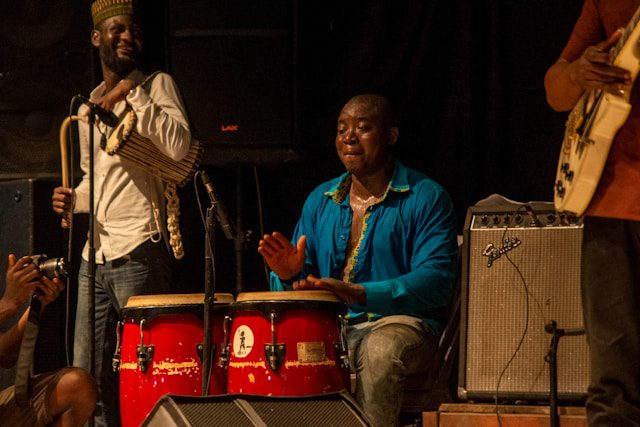
Our varied traditions are an integral component of our different cultures. These unique cultures frequently serve to help define our sense of who we are and where we belong. This is the true regardless of whether or not we practice the custom in issue – it is still a part of our cultural heritage and partaking in it (or not) speaks something about both who we are and who we aim to be. Many countries’ cultures and traditions vary considerably around the world. They are part of what makes our world such a diverse and intriguing place to live.
Strange Cultural Traditions In Africa
Africa is a magnificent continent packed with thousands of traditional rituals, some known, and others undiscovered. Some of these practices are still being practiced in the remote corners of the continent, many years after civilization. These ethnic cultures perform particular practices that will leave some people surprised and others intrigued. Here are some tribes from around Africa with jaw dropping cultures:
1. Sharo Beating To Earn A Wife And Respect
In some parts of the Fulani (Nothern-Nigeria) culture, men who are eager to create a family do not get the leisure of merely coming to the bride and popping the question, especially if the bride side picks ‘Sharo’ as the criterion for the marriage to sail through. ‘Sharo’ involves whipping. Through this exercise, the groom gets beaten up by the older members of the community so as to win a wife and respect.
If the male is not strong enough to bore the agony, the wedding is called off. Many young individuals from this tribe have succumbed to the whipping, which accounts for why this is not a required procedure. Other than flogging, the bride’s family can chose ‘Koowgal’, which is a dowry payment alternative or the ‘Kabbal’, an Islamic rite comparable to marriage but in the absence of the bride and groom.
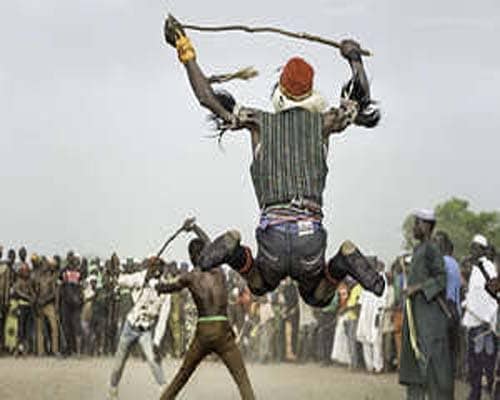
2. Bull Leaping In Ethiopia
In some parts of Ethiopia, young males have to perform some type of ceremony to establish their manhood. This entails him running, jumping and landing on a bull. This is then followed by sprinting over many bulls arrayed in a straight and closely-knit herd pushed by the tail and horns by older guys.
The young guy passes through a fascinating rite of passage before jumping over the cattle: his head is half shaved and his body is rubbed with sand, thought to clear his sins. To get strength, he also strips of the tree’s bark that are fastened around his body in a cross form for spiritual protection.
Usually numbering between 7 to 10 castrated cows, the castrated cattle in turn are also coated with dung to make them slippery. The cattle are brought into the middle of the circle at night till early in the next day when grazing once more is scheduled.
For years the Hamar tribe has followed this custom. This is an interesting society since they view land as free for grazing and use, same as fruits are free for whoever gathers them; they do not believe in individual property ownership.

3. Chewa’s Feast Of The Dead
The ‘Chewa’ group is a Bantu tribe found in Malawi. This group is known for its hidden society known as ‘Nyau’. During the burial ceremony of a tribe member, it is usual for the corpse of the deceased to be washed. To wash the corpse, the body is carried to a sacred spot where the washing is done by slicing the throat and pouring water through the insides of the dead.
The water is squeezed out of the body till it comes out clean. This practice is based on the conviction that death is a journey to the ancestral world and that the spirit of the dead must first be cleansed before it can join its ancestors. The meticulous and careful performance of this cleansing ritual is considered as crucial to ensuring that the peace of soul is fully transitioned to another life.
For Chewas, physical cleanliness is just a tip but rather has a deep spiritual connection. Cleansing one’s body implies he/she will rest peacefully without coming back as a ghost. What’s more, it shows respect and care for one who has died thus reaffirming their connection with the living dead.
After this process, they prepare the corpse for burial followed by singing, dancing in remembrance of deceased person. All come together not only mourning over death but also celebrating one’s life and passing to heaven.

4. Wodaabe’s Wife Snatching Night Dance
The Wodaabe ethnic group can be found in northeastern Cameroon, the western area of Central Africa Republic and southwestern Chad. It’s a subset of the Fulani ethnic group. In their typical festivity, people of the village go dancing at night yet the whole night is not just about dancing.
While the dancing is going on, men are free to kidnap women from their tribe. It doesn’t matter if the woman is married or not, the man is permitted to retain her unless the woman refuses or her husband catches the man in the midst of snatching the woman and stops the process.
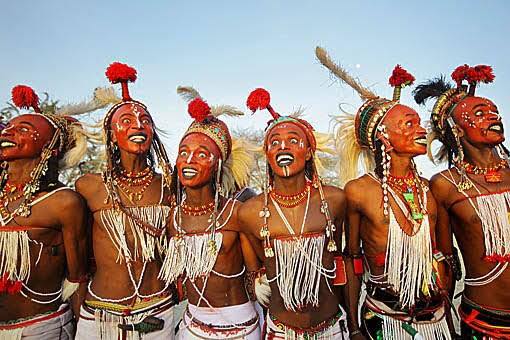
5. Finger Cutting In New Guinea
Adopted by the Dani people of Papua New Guinea, finger cutting is mainly practiced by women, cutting their fingers off on the death of a loved one. Apart from expressing their grief physically, finger cutting is done to drive off their residual spirits.
They made the finger removal process as least painful as they could have (still, too graphic to explain). The fingers are burned and buried close by once removed.
Within Papua New Guinea, there are still uncontacted tribes most likely engaged in similar ceremonies. Another extreme habit once embraced by the Fore tribe in New Guinea was eating the corpses. Especially with regard to the brain. This custom brought about a condition known as “Kuru, or Prion disease.” Researchers still find much mystery regarding the people living on New Guinea. Even with found tribes, their practices and actions are not clear-cut. Neither do the lawlessness and ongoing turmoil of the nation help anthropologists.
Strange Cultural Traditions In Asia
1. Corpse Walking
From the dawn of time, a well-known Taoist exercise known as corpse walking has dominated Cantonese film. Any Chinese millennial will probably relate stories of leaping zombie bodies and Taoist exorcists.
Still, corpse walking has some real use. Ancient history claim that family members who passed outside of their own area needed transportation back since they could become evil spirits. Taoist priests so offered to “corpse walk” the bodies back home.
To give the bodies cadence so they may follow, a Taoist priest leads them with bangs on a gong. These deceased would cross dead of night villages or towns. Such events seem to last until the cultural revolution, when the Communist party started suppressing esoteric activities.
Still, most people agree that the Taoist priests really transport the bodies. Two soldiers halted a corpse walking party once they felt suspicious and looked at them. Actually, the group was living; they were merely carrying dead under their large Taoist garments. Party members would alternate with priests “leading,” or “escorting,” the party.

3. Kutkot
Kutkot is a custom whereby loved ones’ graves are exhumed and dressed in garments and jewellery. Families frequently find their deceased after one year of burial; they come from the Mangyan tribe in the Philippines. They would then outfit them in jewellery and clothes. For a year the family would then eat, live, and sleep beside them.
Families would then conduct Sinakot to bid farewell to their departed loved ones. To mimic a mannequin, this procedure entails washing the bones and cloth-wrapping the body. Once finished, the bodies are buried close by in a cave.
Strong Catholic influence among many Filipinos helps to explain their negative opinion of this behaviour. Therefore, the custom is gradually fading since young people refuse to participate. Many people migrate to the city in search of better opportunities, therefore these customs are given up in favour of more direct funeral procedures.
4. Baby Dropping In India
Babies dropped from a height of 50 feet (15 meters) in India for 700 years by both Hindus and Muslims believe this will bring good health and wealth to the families.
Practiced at Baba Umer Durga, a Muslim shrine close to Sholapur, two-year- or under infants are thrown off a roof and caught in a sheet carried by waiting men. Similar ritual is followed in the Sri Santeswar temple close to Indi in the state of Karnataka. Organisers reportedly assert that no injuries have ever been recorded, according to Reuters.
Although this tradition has been around for centuries, it is often criticized because of people’s fears of danger to children. Some individuals have suffered injuries or even died during certain rituals. Again, pediatricians and child protection advocates maintain that no tradition should ever endanger the life or health of minors.
In recent times, child rights groups and Indian authorities have put more pressure on the practice to be prohibited. Some regions have passed or suggested legislations aimed at safeguarding children from potentially hazardous customs.
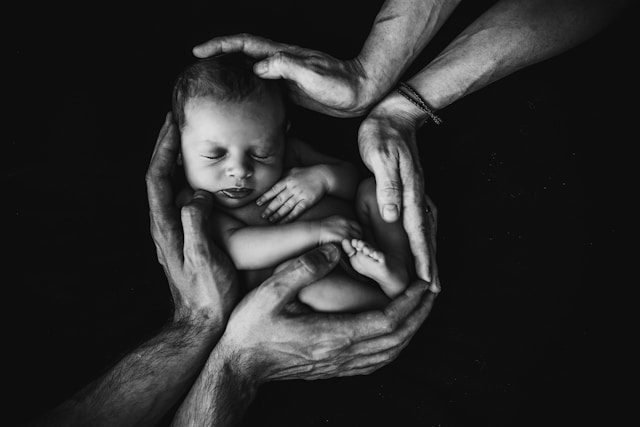
5. Isolating Moms Before Delivery In Pakistan
Mothers in Pakistan’s Chitral District, sometimes known as The Kalash, have an unusual habit whereby they deliver their infants in an isolated structure called “the bashleni”.
This custom stems from moms in labour being deemed as “unclean.” Men and women avoid the birth of the kid out of concern about personal contamination. Women who are on menstruation alone can visit the house to help the mother as they too are considered as dirty.
The custom of isolating mothers during childbirth in Kalash community of Chitral is a symbol of its great cultural background and an unusual standpoint towards one of the most important happenings for people. The importance of this practice to the culture aside, compatibility between modern medicine and better understanding about maternal health is necessary to prevent deaths among mothers and their infants since they are supposed to be safe.
All over the region there are efforts aimed at improving maternal health care services. These include more careful attention during prenatal and postnatal stages without disturbing traditional norms. Bridging tradition with contemporary advancements was done through mobile health units and training programs.
Childbirth can sometimes pose great difficulties especially if it involves isolation aspect as well. Limited access to modern medical facilities as well as lack of trained personnel may also lead to their deaths; thus, traditional methods should be integrated with contemporary ones slowly in order not only ensure safety but also health for both mother and child.
While these practices are changing, it is necessary to maintain a gentle balance between cultural traditions and Health Innovations.
Strange Cultural Traditions In North America
1. Groundhog Day Pennsylvanian
Groundhog burrows all throughout America are under close examination every year on February 2 for their ability to predict seasonal change.
Folklore says the groundhog will come out of its burrow and spring will arrive early if it is cloudy. Should the sun be shining, it will return to the burrow and six more weeks of winter will follow.
From as early as the seventeenth century, people have been coming out to see the groundhog; the largest celebration these days is Punxsutawney, Pennsylvania, the state where the custom started and became most known by the 1993 Groundhog Day.

2. Turkey Pardons
US presidents have received a Thanksgiving turkey at a special ceremony and, occasionally, have publicly pardoned the turkey, therefore sparing its life since the 1940s. (It’s unclear from what offence the birds initially engaged in to merit a pardon.)
George Bush Senior made the turkey pardon a permanent component of the ceremony in 1989, therefore it is now a yearly celebration. Sadly, usually lasting less than a year, the joyful turkeys are returned to a farm to live out their remaining years since they have been overfed and develop heart disease and other obesity-related disorders.
3. Crying at the Moon in Wisconsin
In Warrens, Wisconsin one can find an odd custom called “Crying at the Moon” which happens during Cranberry Festival every year. In this festival that is meant to commemorate the harvest of cranberries from this region, this is one of the Strange cultural traditions around the world where people gather at night and howl like wolves.
This is done as a funny way of honoring those who work on their fields collecting berries under moon light throughout all night long. It’s a bizarre method for creating community spirit while also maintaining agricultural heritage.
Not only for entertainment, the ritual also connects the residents with the soil they till. The tradition reinforces their pride in heritage, highlighting the significance of agriculture to both economy and culture in the locality.
“Crying at the Moon” may sound strange but it does demonstrate Warrens’ creative spirit. As an example, in a world where customs can sometimes appear irrelevant or antiquated; this intriguing practice demonstrates how even weirdest of traditions are essential for keeping communities alive and honoring what makes them unique.
4. The Polar Bear Plunge
The Polar Bear Plunge happens on New Year’s Day in various parts of North America especially Canada and Northern parts of United States. It involves groups of people jumping into very cold waters usually within winter seasons.
The plunge not only tests endurance but signifies starting off with great burst of energy and wanting to wash away all the things that troubled you during the last year. Additionally, several areas throughout these events provide help to charities making it one of the odd cultural practices in different countries yet selfless tradition.
The Polar Bear Plunge is a tradition that is deeply altruistic despite the harsh conditions. Most of these events are meant to raise funds for charity purposes ranging from local food banks to national health organizations. Participants often receive pledges from family members or friends and use the proceeds to assist these essential services. This charitable side adds another layer of meaning to the event and transforms it from merely being a physical challenge to an act of community support and generosity.
The Polar Bear Plunge is becoming more popular across generations and all kinds of people are participating in them. For some, it is just a one-time experience but for others, it becomes an annual ritual where they connect with their relatives or friends or meet their own targets.

The event has become popular because of its thrilling nature, traditional elements as well as charity activities thus making it one of the most unique festive celebrations in North America during New Year season.
The essence of the Polar Bear Plunge goes beyond surviving through coldness; rather, it entails embracing this metaphorical icy embrace so as to be able to confront life’s challenges squarely. In this unusual but exhilarating tradition, participants get power, community and purpose but also help those who are suffering in some way.
5. Toe Wrestling in Ontario
In different regions of Ontario, Canada, toe wrestling is one of the many competitive sports that might look like something kids do to waste time. Just like arm wrestling but using toes, competitors grapple for their opponents’ toes by locking them up tightly.
Initially started as a trivial game played in pubs and taverns, toe-wrestling has grown in popularity to the point where it can now boast of its championships. It is an exceptional yet amusing custom which show the bizarre side of human rivalry.
Strange Cultural Traditions In South America
1. The Takanakuy Celebration In Peru
Deck each other or decorate the halls. While in some parts of Peru the day is observed with bare-knuckle anarchy, you might link Christmas with Santa Claus or peace on Earth and goodwill towards men. On December 25, the Takanakuy celebration brings people to settle their problems by pushing one another to fistfights.
These take place in improvised rings watched on by onlookers. Attending the celebration, fighters and onlookers dress in costumes inspired by local legends. The officials wield whips to help to manage the proceedings. Originally rooted in the indigenous pre-Christian customs of the Chumbivilcas district of Peru, Takanakuy has now expanded more broadly to cause trouble for law- enforcement officials.
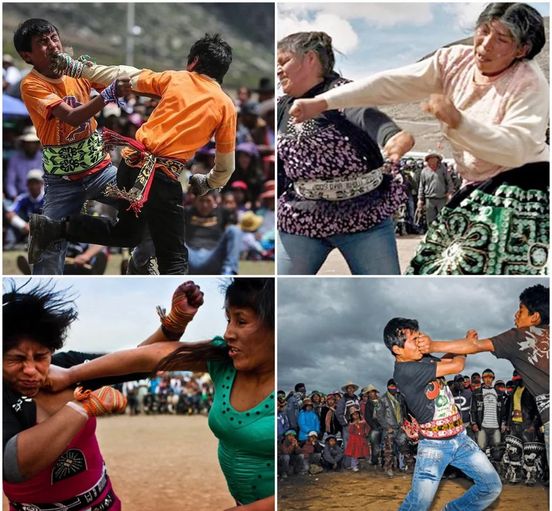
2. The Cosmic Vision of Desana Tribe
Deep in the Colombian Amazon, the Desana tribe preserves a cosmic view closely related to the ecology. This is one of the quirky ceremonies around the world where the harmony between people and the environment; detailed face painting shows a person’s relationship to celestial bodies; shamanistic practices direct the society.
Eco-travelers can discover well chosen trips that honour and expose the great wisdom of the Desana people. The Desana tribe is not just to believe but to be. Their cosmology comes to play with Amazonian ecology revealing a much deeper understanding than ever of how all living beings interrelate with earth and sky.
According to Desana culture, the universe can be taken as a living being whose parts connect up with each other. Among these events stands out face and body painting involving various patterns that are used for example on some body parts particularly during certain ceremonies which are not only beautiful but they have great symbolic value.
Every pattern and color produces this aspect of each person’s connection with cosmos such that it becomes possible to communicate with supernatural powers through colours or even patterns carved by make-up. It is believed therefore that people who wear similar tattoos tend to orbit around like suns and moons in harmony while going about their daily chores throughout life time.
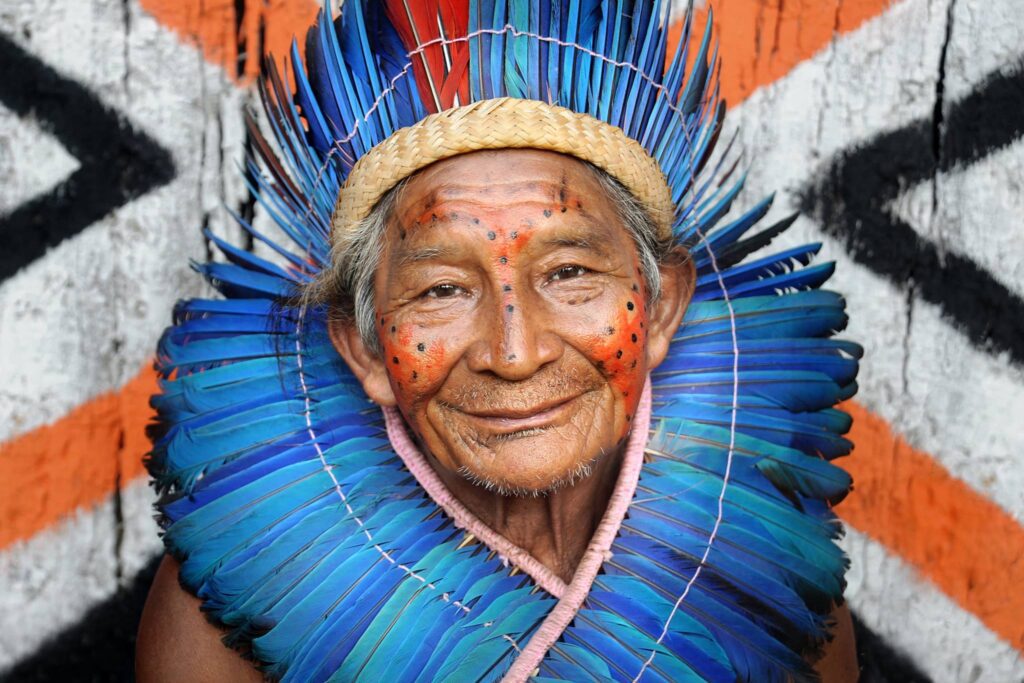
3. Venezuelan Dancing Devils of Corpus Christi
A UNESCO recognised legacy, the spectacular display of faith and heritage in Venezuela is the Dancing Devils of San Francisco de Yare. Dancers in extravagant masks and costumes rhythmically move to the sounds of drums and maracas during the Corpus Christi celebration.
Customised seminars and folkloric events provide a closer access to this special legacy for individuals of interest. On the same day as Corpus Christi, San Francisco de Yare and other towns become a vibrant stage for the Dancing Devils. Those who partake in this performance are often referred to as “devils”, and they wear masks and costumes that are both ghastly and beautiful.
Frequently, they have horns, fangs, and bright colors on their faces which signify dark forces that devils become during their dance. Among the most important activities during this festival, the ritual surrendering that takes place within it all. As frightening as these devils may look like but ultimately symbolize evil spirits that should be vanquished one day.
It is at this time in celebration when these devils kneel before the Eucharist as part of acknowledging good triumphing over evil finally. It is an act of submission that is very much a matter of faith and demonstrates how significant this festival is in Christian spirituality today.
Those who want to engage in something very close to spirituality as it is to visual spellbinding beauty will never miss any thrilling experience with the Dancing Devils of Corpus Christi because it always invites them back again and again.
4. Easter Island’s Tapata Festival
Imagine yourself standing at the base of a volcano, then skidding down the slope on two banana tree trunks only to be met by a howling throng. If you are up for it, then the Easter Island (also known as Rapa Nui) Tapati Festival in Chile is just where you should be!
It’s a picnic after all, so grab yourself a spot of grass and observe local residents engage in spear throwing contests, prepare empanadas, and overall highlight their abilities in death defying activities in one day! All you have to do to celebrate this Polynesian island celebration with the residents is grab a cold bottle of bubbly.
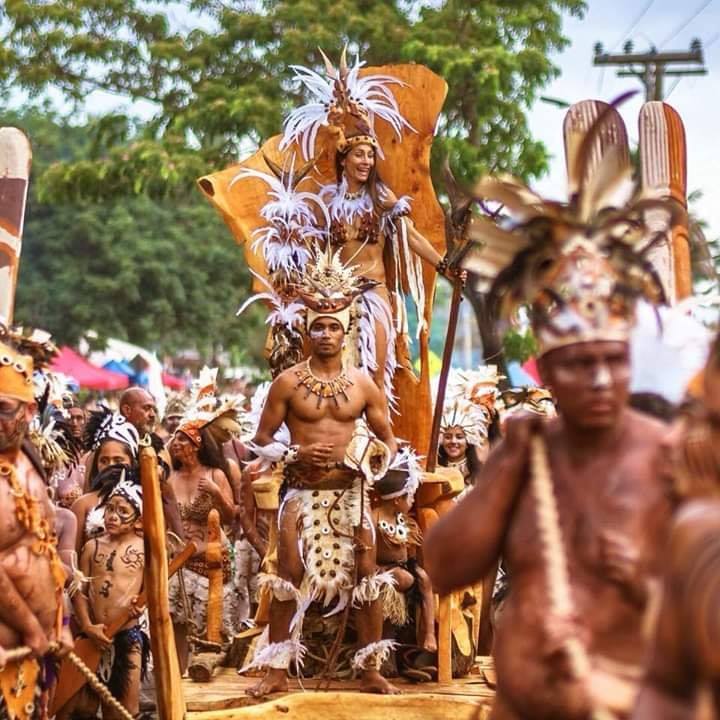
European Unusual Cultural Traditions
1. England Kettlewell Scarecrow Festival
Kettlewell Scarecrow Festival, which began about thirty years ago, is among the best and largest events held in the United Kingdom With hundreds of colourful straw-stuffed mannequins, some of which resemble well-known celebrities like the Duke and Duchess of Cambridge.
Yorkshire Dale village comes to life two weeks in August. The innovative nine-day celebration is attended by the entire town, mostly to generate funds for the church, the village hall, and the local school.
Besides the displays of scarecrows, the festival includes many activities and events, such as; live music, craft fairs and food stalls that offer local delicacies. All over the village there is a festive atmosphere because the Kettlewell Scarecrow Festival brings together creativity, community spirit and tradition.
The Kettlewell Scarecrow Festival is special because it brings people together. It is a celebration of rural life, creativity and just the joy – simple joy with something being crafted by someone’s own hands. For villagers, it’s a time when they can showcase their skills while taking pride in their community. For visitors it’s an opportunity to enter into the realm of imagination and have an experience like no other anywhere else.
In recent years the festival has encouraged other communities in the UK to hold similar scarecrow events but Kettlewell’s remains one of the most famous. This is proof that there is power in communities working together through creativity because even small villages can have great impact as long as imagination reigns with heart as its main driver.
2. La Tomatina: Spain
Spain is clearly the home of fiestas, and August marks La Tomatina, the largest tomato fight in the world held annually in the town of Bunol, close to Valencia. Celebrated annually on the final Wednesday of August, La Tomatina is part of a week-long event honouring the Virgin Mary and San Luis Bertran, Bunol’s patron saint.
The history of the festival is quite unclear since nobody fully knows how it began. Among the several hypotheses put out, the only one with confidence is that Bunol’s tomato fight has been a powerful legacy from 1944.

The benign fight consists in flinging ripe tomatoes in an amusing every-man-for-himself struggle. Tonnes of tomatoes imported from the Extremadura region are dumped on the streets once the water cannons are fired, starting the anarchy.
Each August, nearly 40,000 people including residents, reporters, and international visitors travel to Bunol join the World’s Biggest Food Fight. Apart from the well-known tomato fight, the celebration includes parades, music, dancing, fireworks, and a paella making competition even in the evening before, therefore ensuring maximum enjoyment all through the week.
3. Aespia, England
Held in a secluded forest area close to London, Aespia is one of the best alternative celebrations in the UK and one of the most strange cultural traditions around the world, the 24-hour festival of interactive art and escapism. Bring your own camping gear or stay in one of the fully equipped Luxury Bell Tents on and lose yourself into a multi-dimensional canvas bursting with innovative art, inspiring music, and like-minded people.
Three separate worlds make up the carnival, including anything from dreamlike installations buried among the trees to impromptu performances.
4. Busójárás, Hungary
Busójárás is Hungary’s wildest celebration combining pagan rites, folk dancing, and demonic masks. Held in the small town of Mohács in February to frighten off the waning days of winter, the noisy carnival also celebrates life for the local Croatian minority (Šokci).
Inspired by the Battle of Mohacs in the sixteenth century, hundreds of busós, or townspeople masquerading as hideous creatures, arrive in rowboats on the Danube and then march through the streets in horse-drawn carriages. Apart from the main procession, there are several themed events to enjoy as well as lots of spiced wine and pálinka (traditional fruit brandy) to warm those cold days.

5. Spain’s Batalla Del Vino
Known locally as La Batalla del Vino de Haro, this wine fight in Northern Spain’s La Rioja area has thousands of all-white-wearing residents and visitors throwing great vino tinto on one other with buckets, bottles, or water pistols. Honouring San Pedro, this one-week celebration of music and wine drinking ends with an amazing wine battle on a hill outside the little town of Haro early on June 29.
Along with the brawl, there are a range of activities that happen during the week-long festivities which include concerts, wine sampling events, bullfights and fireworks displays. The entire town turns into an exuberant carnival venue attracting tourists who not only want to sip some wine but also want to explore La Rioja’s rich heritage and cultures.
Participating in the “La Batalla del Vino” is an unforgettable experience filled with fun, tradition and community spirit. This is an opportunity to indulge in the playful aspect of Spanish culture while taking part in ancient traditions handed down for generations.
From someone who loves wine to anybody looking for a once-in-a-lifetime joyous celebration, the Wine Battle of Haro is such an amazing choice full of love for wines and warm companionship as this festival is as rich as it could be.
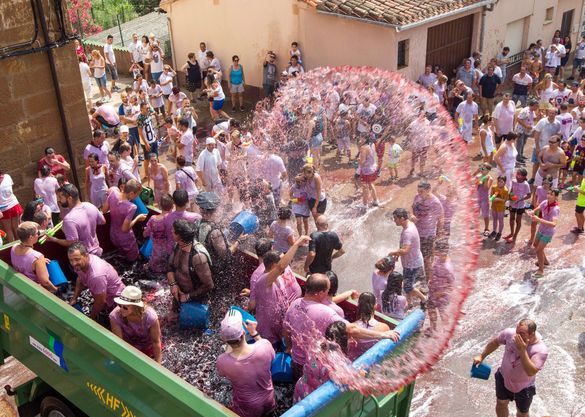
Antarctica Unusual Cultural Traditions
1. Polar plunge
Almost certainly the most common “custom” in Antarctica, and like others on this list, it centres around being scarily cold, but momentarily. Particularly in the winter, Antarctic sea water is often as cold as it is possible for water to get. The seas around Antarctica vary from roughly -2C to +2C throughout the year; at -2C the sea freezes; the salt content causes freezing to happen below 0C.
A fairly common activity is jumping in the sea wearing swimming gear (or just naked if you don’t have any and wouldn’t traumatise others around you). Originally something that members of scientific bases especially at Midwinter or Christmas, this has expanded over the continent and now occurs significantly more often as shorter term visitors in the summer want to have a go too.
Usually, you jump into the sea attached to a rope; in the winter, you may have to dig a hole through the sea ice to reach the sea first; in open water, the plunge could include a quick swim to a nearby boat.
Many tourist cruises visit Deception Island in the Peninsula region where there are (small) regions where geothermal heat warms the water, in this case as in the accompanying picture, the process is to sprint into the water, dip under and run out once more. Extra points should you also find a penguin in the photo too.
This occurs at several stations, including McMurdo, Palmer (US) Scott (NZ) Mawson, Davis (AUS) and others; it has lately been extended to visitors on summer cruise ships.
The concept is not unique to Antarctica; in recent years, undertaking similar activities in frozen lakes and seas, or unfrozen lakes and seas in freezing regions in winter has become a means of generating money for charity.

2. Signific Thin Ice Race
For much of the winter, the British Base at Signy Island in the South Orkneys is surrounded by open sea and constant sea ice. Originally a major centre for marine life, the base featured a diving centre most if not all base personnel would dive recreationally and there were enough wet suits for all the winter base compliment.
The base commander would check the ice at the beginning of the winter as the temperature dropped and the sea started to freeze in the cove in front of the base and pronounce it ready for the ‘Thin Ice Race’. This would occur the same day as the state of the ice was vital; it should be almost thick enough to walk on, but not consistently so; so, you would prefer not. Left overnight, it would most likely be overly thick.
After that, everyone would go get dressed out in their wet suit and maybe in fancy dress and gather at the starting area. On the word go everyone would dash across the ice and begin to fall through it into the water. The route ran between 300 and 400 meters; it benefited light runners with large feet but slower runners might leap on the ice close to the leaders sending both into the frigid sea, therefore it took a long time to finish the course.
Though sweating was an issue and breaks while swimming in a sea-water pool you had created were very delightful, it seems like the coldest thing you could imagine!
3. The Antarctic Hair Freezing Contest
The contest of freezing hair in Antarctica is an unconventional and amusing custom that is held in some of the continent’s coldest bases. This is one of the Strange cultural traditions around the world that takes advantage of extremely low sub-zero temperatures which can reach as much as -40 degrees Celsius, especially during winter months.
To take part, participants heat their hair with warm water before going outside into ambient Antarctic air that happens to be below freezing point. As a result wet hair freezes immediately therefore making it possible for the participants to create weird-shaped frozen hairs using their hands only.
The more bizarre hairstyles seem to be; it makes them become even better! The competition is generally done along with photographs taken documenting all the hilarious looks of frozen hairdos.
Frozen hairs styles are then judged mainly by other researchers or base personnel on grounds such as creativity, novelty and craziness themselves. The person who wins gets chance to brag and sometimes also get a little token but what is more important here is that during those tough times in Antarctica they share laughter and friendship with each other.

In addition to being path-breakers of humor this light-hearted contest provides people living in Antarctica with long-term impressions about making winter less boring than usual; they inspire us to find ways around our problems and make fun out of them it is possible for every single activity even if it is the simplest and turn them into a source of fun and bonding.
4. The 300 Club
The 300 Club is an extreme and exclusive tradition observed at the Amundsen-Scott South Pole Station, located at the geographic South Pole. This daring challenge is only possible during the depths of the Antarctic winter, when temperatures can drop to a bone-chilling -100°F (-73°C).
The proceeds from this club would be a good place to start for people who want to know how much it takes was said to be all about. This was because before taking on such challenges, he usually asks them what they are capable of. Once he realized that they did, he pointed out that either way, the members will have rare opportunities to witness the effects of rapidly moving through air at subzero temperature. That is 300 degrees Fahrenheit (150 °C).
In order to get to this point, they purchase a sauna heated to about 93 degree Celsius for a few hours before going outside with just some boots on their feet. To start off with, despite wearing only these items, they dash outside towards the -100 degrees Fahrenheit temperature and circle around station’s geographic marker leapingly coming back into warmth of sauna house again.
It can be both thrilling and terrifying simultaneously since if carelessly done frostbite may set within seconds build into their surface area stopped like bulldozers moving when hit. However for those who manage to accomplish it, it’s an impressive feat belonging amongst few in the entire world. The 300 Club stands for endurance against all odds and looking out for new challenges in harshest climate zones on the planet.
Unusual Cultural Traditions In Oceania
1. The Yam Festival in Vanuatu
In Vanuatu, a region in the south Pacific, the Yam Festival is an important cultural event that marks the harvest of yams, a staple food crop. In addition to being a dietary mainstay, yams have an important spiritual role in life, prosperity and status.
Usually held in April or May, it is a festival of rites and rituals. One of its most fascinating traditions is the yam-growing competition where villages compete for the biggest and most beautiful yams. They are displayed with pride and are often used as offerings to the gods during elaborate ceremonies.
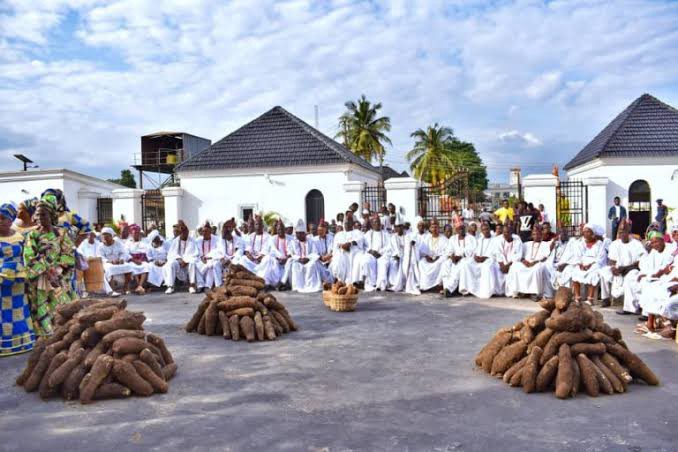
Traditional dances, music and feasting are part of the event. Men wear traditional attire made from woven pandanus leaves while women don feathers and other fineries. The dances also tell stories about gods ancestors or land. Not only does this festival celebrate agriculture but also reinforces a sense of cultural identity and social ties within the community.
2. Haka in New Zealand
Haka is New Zealand’s indigenous warrior dance, recognized widely as one of Oceania’s most prominent cultural instances which get displayed world over. Haka consists rhythmic chant and vigorous bodily gestures together with stomping sounds that accompany its accompanying deliberate faces by all performers like children, men and women (Kahu et al., 2013).
Traditionally, it served as an important ritual before going into battle to scare an enemy while at the same time calling upon Tūmatauenga, the War God. Nowadays, it is performed on various ceremonies including welcoming special guests, honoring people or celebrating their achievements. However the All Blacks rugby team from NZ remains the most noteworthy group that performs Haka (McNicol).
It therefore not just portray movement but also people’s identity; strength and togetherness (Finney). A story is always told during every performance which reflects on how Maori have lived through different times with varying challenges they’ve faced; their values shaping who they are today (Vision from the East, 2008). We keep watching this tradition transforming before our eyes while it remains an indispensable part of NZ culture.
3. The Firewalking Ceremony in Fiji
The vilavilairevo fire walk ceremony is a captivating custom that takes place among the sawau tribe residing on beqa island in fiji. It is said that this practice began after a sawau warrior was blessed with a spirit’s ability to walk on fire as payment for his life. He survived and it has been handed down within families.
During this event, all men from the tribe walk barefoot over hot stones which seem to be insensible to their extreme temperatures. These rocks are carefully arranged in a pit after having been set ablaze for several hours. Participants then cross it without any hesitation or showing signs of injury.
This ceremony serves as an examination of one’s belief and chastity; furthermore, it is strongly believed that only those who have properly prepared spiritually may perform such acts without being harmed by flames. To make them even more intense and mystical are traditional songs and dances that go along with that occasion. The event used to be kept away from outsiders; however nowadays it is often done in front of tourists so that they can have an insight into the deep spiritual traditions of Fijians.
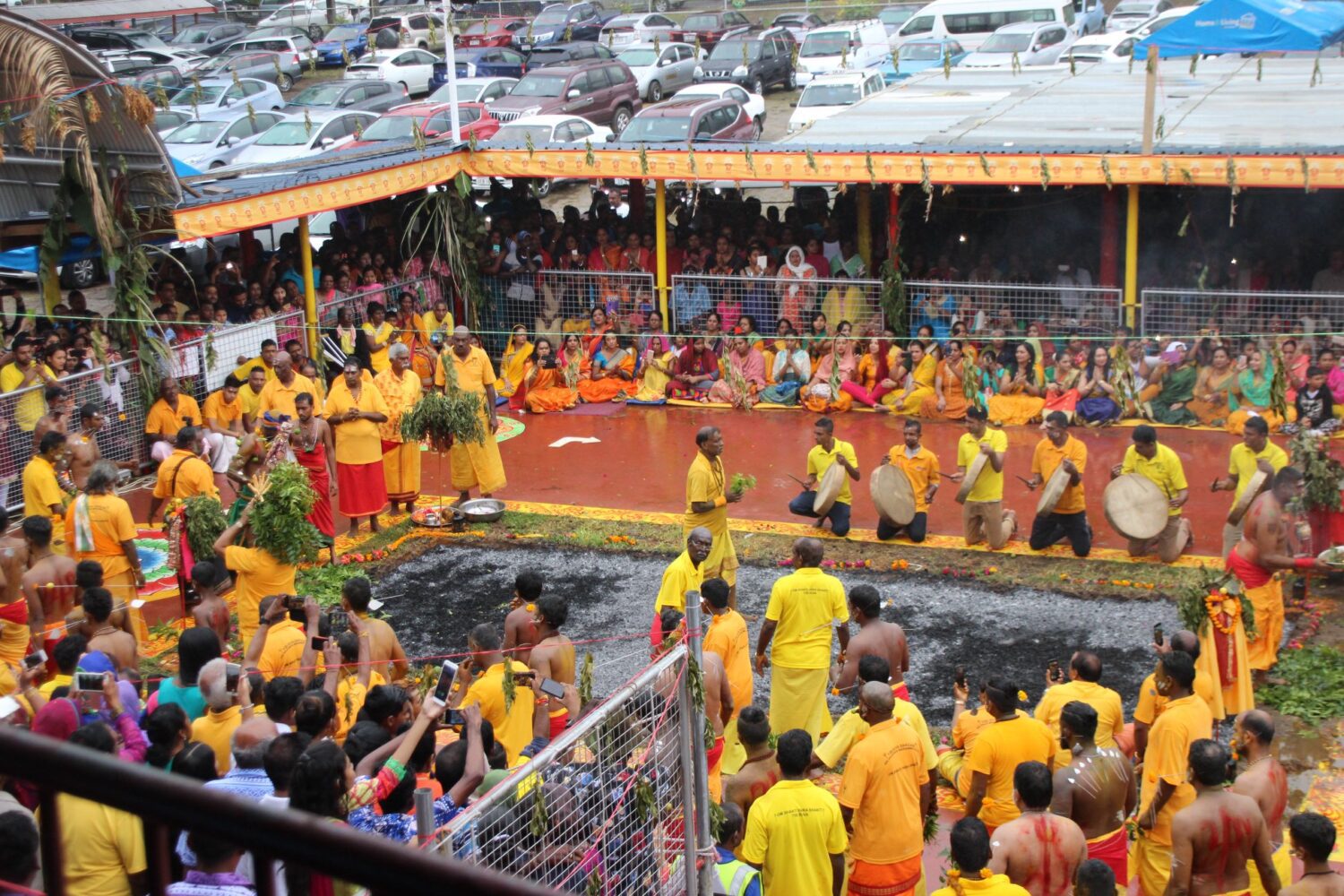
Impact of Globalization and Modernization on Traditional Customs
- Worldwide Popular Culture Dissemination: Westernization and the internationalization of media have resulted in a more homogeneous global culture. As a result, such trends lead to colloquial customs, dialects and other forms of expression being replaced by globalized ones.
- Decline in Indigenous Knowledge: In the course of modernization, there is a tendency to ignore local customs, artisanal skills and autochthonous knowledge systems in favor of modern alternatives that are perceived as more effective Traditional practices get sacrificed for technology.
- Shift away from traditional economic systems: Present-day economic systems, which are propelled by globalization, normally puts in favor of industrialization and consumerism as against traditional systems based on agriculture or handicrafts. Henceforth some traditional systems may be viewed as non-economic by reason of their inability to generate returns.
- Migration and urbanization: When people move from rural areas into cities looking for better sources of livelihoods, this may result into the neglect of indigenous customs and cultures in favour of new ones.
- The influence of mass media: The vastness of media outlets including television sets, internet websites and networks, as well as social media channels often promotes a common culture that makes it hard for local traditions to compete. Consequently there may be difficulties in maintaining conventional stories told through music or other artistic expressions due to existence of international entertainment alternatives.
- Cultural Exchange: However this is also a feature of globalization that promotes cultural exchange and enables traditional practices to find new audiences and respect all over the world. It is through rediscovery and reinterpretation that some traditions have been rejuvenated in contemporary times.
- Changes in Gender Roles: Traditional gender roles usually transform when modernization takes place to provide room for new forms of femininity and masculinity.

Frequently Asked Questions
1. What Are Some Unfamiliar Cultures?
- Himba of Namibia: The Himba people are indigenous to northern Namibia, known for their traditional way of life, red ochre body paint and distinctive hairstyles.
- Ainu of Japan: The Ainu are an indigenous people from Japan primarily Hokkaido, with a unique language and spiritual practices centered around nature.
- Sami of Scandinavia: The Sami people inhabit parts of Norway Sweden Finland and Russia with a culture rich in reindeer herding traditional clothing (gákti) and joik singing.
- Mentawai of Indonesia: The Mentawai people from the Mentawai Islands practice tattooing shamanism and live in communal longhouses.
- Kalash of Pakistan: The Kalash people live in the remote valleys of Pakistan maintaining a polytheistic religion and vibrant festivals celebrating nature.
2. What Is The Most Unique Culture In The World?
The Maasai of East Africa: Among the Kenyan and Tanzanian, there exists an extraordinary society that espouses traditional customs, such as age-group rites, hackneyed garb (shukas), and residing in enkangs (villages). The Maasai people have gained notoriety for their adumu jumping dance and profound attachment to their cattle.
3. Which Country Has The Most Beautiful Culture?
Japan has often been revered as one of the most beautiful cultures in the world owing its characteristics to hard work pursued over time through details, cohabitation with nature and conservation of (ancestral) traditions. The aesthetic principles guiding wabi-sabi (which means recognizing precision in defection), tea ceremony antiquities, breathtaking seasonal festivities alongside intermingling Shintoism with Buddhism can be cited within this unique beauty such as existing only in Japan.
4. Which Country Has The Best Tradition?
Every feature of life is permeated with India’s own beautiful and varied customs which have made it famous all over the world. Within it, local customs abound; for example, Diwali or the ‘Festival of Lights’, Holi or ‘Festival of Colors’, or other customs like practicing traditional dances such as Bharatanatyam or Kathak, Yoga and Ayurveda.

5. What Are The Top 5 Cultures In The World?
- Chinese culture has been around for thousands of years. It has been a big influence in many ways, from deep wisdom (Confucianism and Taoism), vast contributions to art, cuisine, literature to inventions like paper and gunpowder.
- Indian culture is highly religious with diverse religions, languages, arts and foods that have also impacted others.
- Western civilization owes its foundation to ancient Greek culture which was critical in terms of philosophy politics art literature and science.
- Japan has a peculiar mix of traditionalism and innovation honoring both rituals and nature as well as aesthetics so that we see this in practices such as Ikebana (flower arranging), tea ceremonies or simply the latest technology.
- On the other hand some African cultures particularly West African ones are known for their rich traditions such as music dance story telling visual ‘art’ communal lifestyle plus their spiritual beliefs emphasizing harmony with nature as well as ancestors.
6. Out Of All Countries In Africa, Which Is The Most Likable?
South Africa was voted as the “most friendly” country globally.
7. Which Nation’s Culture Is The Wealthiest In The World?
For centuries before the imperial west rose to power in the mid 1700s, China was the richest country in the world under the Ming and Qing dynasties.
8. What is The Strangest Natural Attractions
One of the strangest natural attractions across the globe is the Dead Sea; a saltwater lake located between Jordan on its east side and Israel or Palestine on its west as well. It is also earth’s lowest point with maximum 430 meters below sea level.
Final Words
From funny ways of life which can trouble outside onlookers to profound traditions handed over the generations; every culture presents different perspectives for its people concerning the universe every individuals inhabit. These activities, whether known or different, mean more than simple moves since they embody character, membership and progression.
When exploring such kinds of cultures’ practices, it is essential that you come in with tolerance as well as open-mindedness towards these curious rituals in diverse cultures; this would also help us appreciate the differences that make our planet interesting.
In doing this, we will not only expand our own comprehension but also augment into a common understanding enabling us to develop into one closely-knit unit bound by mutual feelings.


